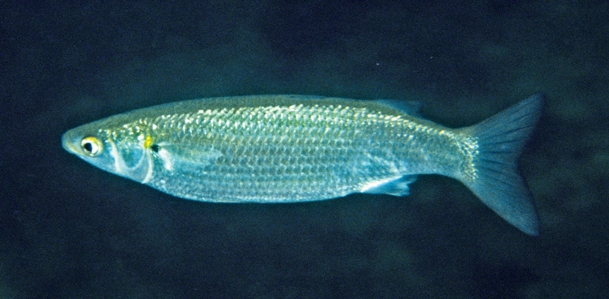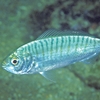General Description
Body long, slender, head small, flattened, slightly compressed; snout pointed, mouth small, terminal; two widely-separated, short based dorsal fins, the second originating behind the soft part of the anal fin; tail fin distinctly forked. Greenish above, silvery on sides and below; axilla of each pectoral fin with a small black spot; eyes pale yellow; pectoral fins translucent, other fins pale to dusky with whitish anterior margins. To 40 cm.
Biology
Relatively common, especially on sand flats near river mouths. Feeds regularly on marine worms and can be caught on hook and line unlike most other mullet species. Considered to be good eating, although skinning is recommended to remove strong flavours.
Habitat
Shallow coastal marine and brackish waters, in depths of 0-20 m.
Open water
Distribution guide
Southwest Pacific and southern Australia.
Species Group
Depth
Shore (0-1 m)
Shallow (1-30 m)
Water Column
Max Size
40 cm
Diet
Omnivore
Commercial Species
No
Global Dispersal
Recorded in Australia
Conservation Status
- DSE Advisory List : Not listed
- EPBC Act 1999 : Not listed
- IUCN Red List : Not listed





